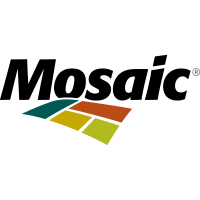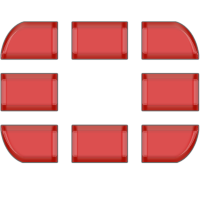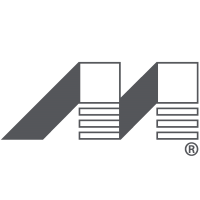
Bulten AB
STO:BULTEN


| US |

|
Salesforce Inc
NYSE:CRM
|
Technology
|
| CL |

|
Sociedad Quimica y Minera de Chile SA
NYSE:SQM
|
Chemicals
|
| US |

|
UnitedHealth Group Inc
NYSE:UNH
|
Health Care
|
| US |

|
Centene Corp
NYSE:CNC
|
Health Care
|
| US |

|
Charles River Laboratories International Inc
NYSE:CRL
|
Life Sciences Tools & Services
|
| US |

|
Autozone Inc
NYSE:AZO
|
Retail
|
| US |

|
ServiceNow Inc
NYSE:NOW
|
Technology
|
| US |

|
Valero Energy Corp
NYSE:VLO
|
Energy
|
| US |

|
Palantir Technologies Inc
NYSE:PLTR
|
Technology
|
| US |

|
Mosaic Co
NYSE:MOS
|
Chemicals
|
| US |

|
Roblox Corp
NYSE:RBLX
|
Media
|
| US |

|
Quanta Services Inc
NYSE:PWR
|
Construction
|
| US |

|
Albemarle Corp
NYSE:ALB
|
Chemicals
|
| US |

|
Crocs Inc
NASDAQ:CROX
|
Textiles, Apparel & Luxury Goods
|
| US |

|
Fortinet Inc
NASDAQ:FTNT
|
Technology
|
| US |

|
Starbucks Corp
NASDAQ:SBUX
|
Hotels, Restaurants & Leisure
|
Utilize notes to systematically review your investment decisions. By reflecting on past outcomes, you can discern effective strategies and identify those that underperformed. This continuous feedback loop enables you to adapt and refine your approach, optimizing for future success.
Each note serves as a learning point, offering insights into your decision-making processes. Over time, you'll accumulate a personalized database of knowledge, enhancing your ability to make informed decisions quickly and effectively.
With a comprehensive record of your investment history at your fingertips, you can compare current opportunities against past experiences. This not only bolsters your confidence but also ensures that each decision is grounded in a well-documented rationale.
Do you really want to delete this note?
This action cannot be undone.

| 52 Week Range |
61.3809
91.5
|
| Price Target |
|
We'll email you a reminder when the closing price reaches SEK.
Choose the stock you wish to monitor with a price alert.

|
Salesforce Inc
NYSE:CRM
|
US |

|
Sociedad Quimica y Minera de Chile SA
NYSE:SQM
|
CL |

|
UnitedHealth Group Inc
NYSE:UNH
|
US |

|
Centene Corp
NYSE:CNC
|
US |

|
Charles River Laboratories International Inc
NYSE:CRL
|
US |

|
Autozone Inc
NYSE:AZO
|
US |

|
ServiceNow Inc
NYSE:NOW
|
US |

|
Valero Energy Corp
NYSE:VLO
|
US |

|
Palantir Technologies Inc
NYSE:PLTR
|
US |

|
Mosaic Co
NYSE:MOS
|
US |

|
Roblox Corp
NYSE:RBLX
|
US |

|
Quanta Services Inc
NYSE:PWR
|
US |

|
Albemarle Corp
NYSE:ALB
|
US |

|
Crocs Inc
NASDAQ:CROX
|
US |

|
Fortinet Inc
NASDAQ:FTNT
|
US |

|
Starbucks Corp
NASDAQ:SBUX
|
US |
This alert will be permanently deleted.
 Bulten AB
Bulten AB






 You don't have any saved screeners yet
You don't have any saved screeners yet

Hello, and welcome to Bulten's Presentation for the Full Year and Quarter 4, 2022. My name is Ulrika Hultgren, and I am in-charge of Corporate Communications and Investor Relations here at Bulten. Presenting the report are Bulten's President and CEO, Anders Nyström; and our CFO, Anna Akerblad.
As usual, we'll be able to ask questions after the presentation, both on the web as well as in the telephone conference. The agenda for today, and we can go to Slide 3, will be a brief overview of Bulten, the market development, the result for the fourth quarter and the full year 2022 and finally, some words about our focus with 2023.
I will now hand over the word to Anders Nyström. Please go ahead, Anders.
Thank you, Ulrika, and welcome, everyone. I will begin with an overview of Bulten. For those of you who may not be familiar with the company. So if we turn to Page 4, please.
As most of you know, Bulten is a supplier of fastening solutions. Our primary customer group is light vehicle and commercial vehicle OEMs. But customers categorized as automotive suppliers and customers outside of the automotive industry are continuing to grow the share of our business.
It's important to know that we don't just supply hardware. Many of our customers use us as partner for product development support, innovation, procurement and logistics.
Bulten's 3 largest customers are Ford, Jaguar Land Rover and Volvo Cars. There are and will remain important, but we have a number of new customers with strong growth in our base, and that's something that we welcome.
The 2022 full year sales reached almost SEK 4.5 billion, which is a 20% year-on-year growth from 2021.
If we turn to Page 6 for an overview of some of the market statistics. In this graph, you can see how LMC look at the global vehicle production forecasts and how they have changed over time. Light vehicle production rates in 2022 ended up at 6.1% growth, just short of the Q3 forecast. Heavy commercial vehicles performed slightly better, but still with the contraction of the production versus 2021 of about 14.6%.
For 2023, both light and heavy commercial vehicles are estimated to grow, much thanks to historical high backlogs of units sold but not yet produced. When looking at these numbers, one should bear in mind that the differences between regions and brands is significant. Bulten's growth has also consistently been higher than the market growth and our 20% year-on-year growth in '22 is another confirmation of this.
Next slide, please. The prices for steel wire rod have stabilized at historical high levels. The flattening, however, makes it possible for Bulten to balance cost versus customer pricing which we now see happening after a long period of backlogs where -- which impacted our margins negatively in the previous quarters.
Next slide. We have to assume that the energy market will be highly volatile for the foreseeable future. Quarter 4 has seen lower prices than in quarter 3. Energy prices is very much the topic to monitor and certainly a factor in the commercial discussions with our customers regarding pricing mechanisms.
So we turn to Page 10 for a look at the major events during the quarter and also in the full year. 2022 was yet another year where we moved Bulten ahead, implementing our stronger strategy in the face of very difficult macroeconomic and industry-specific factors. Quarter 4 was no exception. And to name a few of the major events from '22, we successfully executed on our decision to withdraw from Russia which eliminated risks associated with that market.
We had a very strong inflow of new contracts from both new and existing customers and we made some tough but necessary decisions on our manufacturing footprint, which will improve asset utilization and overall margins going forward.
During quarter 4, we also started to balance customer pricing with the inflationary cost increases, which gave us a recovery in our margins.
Slide 8, please -- sorry, Slide 11. Bulten is committed to be an industry leader in sustainability. And this is a cornerstone in our business strategy and integral to all our business decisions. One recognition of this is the platinum award that we received from EcoVadis in the fourth quarter, placing us at the top 1% of all companies rated.
And now I turn the word over to Anna for the financials.
Thank you, Anders. On Page 12, you can see an overview of our quarterly sales the last years, including 12 months rolling sales. Sales volumes increased in the quarter with over 40% compared to the same period last year, and Bulten delivered its highest sales in history, both for quarter 4 and the full year 2022. We delivered over SEK 1 billion in every quarter last year.
Next slide, please. On Page 13, it is satisfying to see our general growth and that our effort to grow in industries outside automotive have given a result in increased sales. This customer group is now contributing with almost 12% of total sales for the full year compared to almost 9% last year. Our main customer group is still OEM light vehicles with 63% of total sales for 2022.
Next slide, please. Our adjusted EBIT amounted to SEK 114 million in the quarter, equal to 8.5% EBIT margin. We improved the EBIT in challenging times and we are at the run rate of our targeted EBIT percentage for 2024.
Next slide, please. On Page 15, you can see that our adjusted earnings per share amounted to SEK 3.45 in the quarter and SEK 7.48 for the full year.
Next slide, please. Cash flow from operating activities, including changing working capital amounted to SEK 250 million in the fourth quarter. Cash flow from investing activities amounted to minus SEK 72 million in the quarter, a key figure affected by the start of the construction of the new facility in Poland in May in 2021. Cash flow from financing activities amounted to minus SEK 9 million. Total cash flow for the quarter amounted to SEK 169 million with a cash position of SEK 451 million at the end of the quarter. The increase in total assets compared to last year relates to increase in inventory, construction of the new facility in Poland and new leasing contracts.
Our net debt, excluding lease liabilities amounted to minus SEK 411 million at the end of the year. And we have been tying up capital in inventory and taken additional measures to increase activities to release tied-up capital.
Our net debt, including lease liabilities, was also impacted by a new warehouse lease in Germany.
Next slide, please. Our adjusted key indicators for the full year are in line with last year's numbers. The adjusted return on capital employed, including financial lease is at 9.9%. Our adjusted net debt and adjusted EBITDA ratio is at minus 1.1% at the end of the year, and our equity ratio, excluding financial lease at 47.5%.
Next slide, please. On Page 18, you can see our financial targets as well as some of the guidelines regarding relevant key figures for Bulten. In the right-hand table, you can see some guidelines for some other key figures, and we are very much in line with these guidelines. The guideline for average net working capital in relation to 12-month sales is about 20% to 25%, depending on the growth phase. At the end of the year, we had a level of 21.4% and additional measures are taken to decrease tied-up capital, as already mentioned.
The guideline for capital expenditures as a percentage of 12-month sales are 2% to 3% for maintenance of equipment and additional up to 2% for capacity, depending on the market development. At the end of the year, we are at a level of 6% and as mentioned before, we started the construction of the new facility in Poland in May in 2021, which have had effect on this figure.
The figure is also impacted by postponed capital expenditure due to the pandemic that started up again. The guideline for depreciation as a percentage of 12-month sales is 4% to 5%, considering IFRS 16. Without IFRS 16, it has been in a level of 2% to 3%. And at the end of the year, we are in line with this guidance as well.
And now back to you, Anders.
Thanks, Anna. And let's turn to Page 20 for a look at what's ahead of us in '23, and we're going to focus on. 2023 just started and we're certainly planning to leverage the momentum we now have from quarter 4 and then drive further operational and strategic improvements. We'll continue to drive rightsizing of inventories, used it on rightsizing because, of course, the stock has to be adapted to the growth that we're currently experiencing.
Our intention to grow, diversify and provide operational synergies from the right strategic acquisitions is very much alive and we are actively investigating and evaluating potential targets.
We talked about operational improvements that are in various stages of execution and those are very much in focus for us during 2023. After the end of quarter 4, we did announce that Bulten has increased its stake in TensionCam to become a majority owner and we're at the stage where the technology is ready to be commercialized, and this will be another focus point for us.
And last, but not least, we want to celebrate our 150th anniversary this year. We're nurturing a fantastic legacy, and we want to honor that by delivering on a successful 2023.
Next slide, please. We go to 21. So finally, I think it's appropriate to remind everyone of the strategy in our financial targets, which we stand by to be a SEK 5 billion company delivering 8% EBIT consistently and 15% ROCE by 2024. 2022 has been yet another year of strong growth and last quarter shows that the financial targets are realistic, even in times of massive turbulence.
So this concludes our presentation, and we're ready for Q&A.
[Operator Instructions] And our first question today will come from Mats Liss with Kepler Cheuvreux.
Congrats on a solid quarter. I guess it's appropriate to say. Starting with sales, then you have a 40% increase there and just -- well, if you could give some color there, what's price volume and maybe also the new contracts you have started up how much those contributed. And yes, starting there.
Thank you, Mats. Yes, the quarter is certainly a record quarter for us. And the recovery in the industry is certainly driving volume. There's an element of pricing in there as well as you can understand. But in terms of splitting that up, we are not prepared to do that. So I guess that's the response I can give you.
Yes. And the new contract, the full service contract there, are they sort of making any major difference compared to the comparative quarter, I mean, the fourth quarter 2021?
Yes, we are consistently ramping up the contracts that we won. So yes, they're contributing. Yes.
And maybe you can shed some light on how this will impact your sales going forward, but I mean, you touched upon the outlook for vehicle production. But how much more are you able to grow given the contracts you have on hand?
Well, I think we -- as I said, we consistently outperformed the market. We've done that over the last few years, as you can probably remember, in '21, we grew by 17% in a flat market. Now we're growing 20% in a market with modest growth. And if you look at Europe, actually, it's more or less flat. So yes, we certainly aim to outperform the market during '23 as well.
Yes, good. And the order intake, I guess, is also strong. So is this a good proxy for the performance during the first quarter?
Yes. As we've talked about before, there is still volatility in the market. I mean there's still restrictions in the -- in our customers' value chains. So it's extremely difficult to predict sort of -- we see an improvement for sure in that. So it's more predictable today than it was 6 months ago. Value chains seem to be more reliable than they were, but the order intake as a reflection of the plans that we receive from our customers and then to a varying degree that will come into fruition. But I think we can -- it's safe to say that there will be some disturbances, however, to a lower degree than what we saw last year and the year before.
Yes. Good. Then again, I mean, you talked about the targets there and I guess the EBIT margin for the fourth quarter is well above. And what could we say something more there? I mean, capacity utilization have probably grown somewhat. You mentioned that you have been able to balance the costs to a large extent with price increases, but I guess, 8.5% is above the target and this is sort of a peaking now and do you have some extra costs in the making going forward? Or how should we see this? I mean, given that the capacity seems to improve going forward as well, capacity utilization.
Capacity utilization is a lot better today than if you go back to you in time. And I'm not going to give you sort of a forecast of future quarter margins, but we're certainly balancing cost increases and pricing, as I alluded to. And in combination with decent volumes, we should have a healthy level going forward.
But you haven't sort of received any extra compensation for high energy prices or something that costs that have occurred early during 2022 and which is sort of handled or well, in the final quarter of the year, it's a clean margin in that sense, I mean.
Net-net, I would say yes. Then I'm not going to quantify it because that will be to give away too many leads for our customer negotiations because they're still ongoing, and we're still going to have those discussions with our customers going forward. But net-net, I mean, it's run rate.
Yes. Good. Yes, that was well, very, very solid number.
[Operator Instructions] Our next question will come from Kenneth Toll with Carnegie.
So just continuing on the discussion that Mats Liss had. You're right in the report that there is a better balance now between your prices and raw material prices. And we see on the chart on Slide #7 that the steel wire rod prices were stable between the quarters. Do you believe that you will be able to keep this balance? And if steel prices start to go down, do you think that you can keep the prices with a lag of a quarter or 2 so that your margin could benefit since you have been taken a beat on margins when steel prices haven't gone up?
Yes. Kenneth, yes. As we've explained before, and I think you're familiar with this mechanism that compensation always has a certain lag of approximately a quarter give and take. And that means that when steel prices are going up, we get penalized. And if they go down, it's a benefit for us. Right now, they're fairly stable. And it's difficult to know whether there's going to be a big drop in pricing during '23 or not. But in principle, you're absolutely right that if we see a big drop in steel prices that should benefit us, yes.
Okay. Great. And it's more of a mathematical sort of calculation on what price you should pay rather than -- what I'm trying to get to is that when I talk to some other companies that are suppliers, they say that they have good cooperation with purchasing managers and so on. But all of a sudden, when the raw material prices start to go up, then it's very, very hard to get a hold of purchasing managers among customers and so on, and it's everything takes a long time. But when it starts to go down
[Audio Gap]
but is it more like a mathematical formula here that makes it easier also when raw material price goes down?
Yes, for the most part, it's a math exercise for us because we have mechanisms described in our agreements with the customers. So I think we've been able to get hold of all the purchasing managers so far and they will find us. But steel pricing is very controlled, and there is a mechanism in place.
Great. The other thing I was thinking about -- yes, great. The other thing was on the outlook for CapEx. I mean, now you are very soon inaugurating the Polish plant that has been a large share of your investments. So do you have any other larger projects? Or do you see more like maintenance CapEx in the next year or two.
You're right. We are -- we actually did have a grand opening of the Polish plant in January. So we're over that heart of now that there's still going to be -- this is some residual investments that will go into the Polish plant. But then, of course, it's maintenance and some capacity investments will stay within the guidelines.
But no complete in new plants or anything of that larger magnitude planned also yet?
No.
Yes. Okay. Great. Great. Great. And for acquisitions, with a bit shaky macro outlook and increasing interest rates and so on, is that affecting your ability to close acquisitions, you think? Are sellers becoming more eager to sell or give up on price? Or what are the factors influencing if you manage to land an acquisition or not?
Yes. The world is changing, but I'd say what we can see is a surprisingly little impact of that from sellers. And multiples are still pretty high, honestly. And if that's going to change in the short term, we don't know.
And this will conclude our question-and-answer session. I'd like to turn the conference back over to the speakers for any closing remarks.
Thank you very much. We actually have received a couple of questions via e-mail. So maybe we should comment them before we will close. And it's from [indiscernible] at Galliforms. Some of these, I think you already touched base on, but I will read the questions, and then you can make any comments. What's the effective tax rate going forward?
I can answer on that. This year, we had onetime effect that were not deductible, which were affecting. And we are looking for the guidelines, of course, going forward.
The second question, I think we have discussed that, but I will read it anyway. What would be the effects of lower steel prices?
Yes. Yes, we did touch upon that. And when steel prices are going down, it benefits us because we sort of reap the fruits of that before customer pricing is adjusted to reflect the new level. So the impact is positive when steel prices go down.
And there are 2 more questions. Could you comment on the effect of the currency movements, especially the weakening of the Swedish krona to the euro?
Yes. It is, of course, affecting our operations throughout, but we also have this natural flow of hedging, so to say, in our transaction flow. So it's a natural effect for us. And we have -- it is the euro that is affecting us. We have 80% in that.
And the last question, I think we spoke about this also, but it will read it. Will CapEx go below SEK 100 million going forward?
We are not giving any forecast on that, of course, other than that, we will stick to our guidelines in the CapEx as well.
Yes. And we don't have any more questions via e-mail. So I think that we will end by thanking everyone for listening in. And if you have any further questions, please, we welcome you to contact us. So thank you for today. Bye-bye.
Thanks, everyone.
Thank you.
The conference has now concluded. Thank you for attending today's presentation. You may now disconnect your lines at this time.